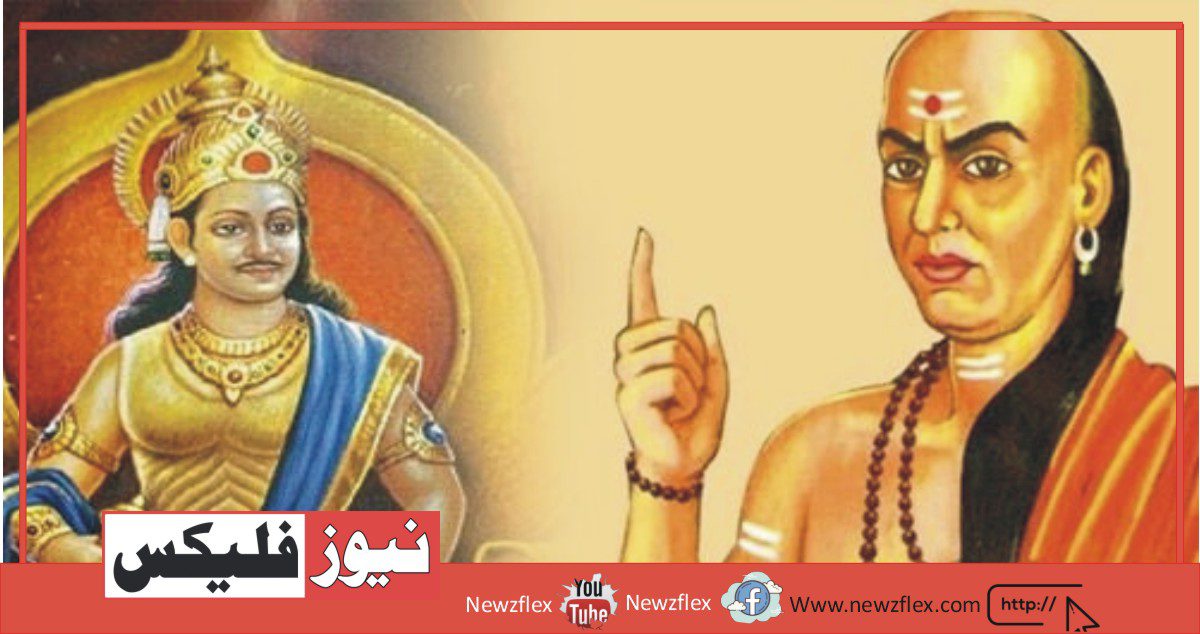
Chandra Gupta Maurya
Chandragupta was the founding father of the Maurya dynasty, which ruled ancient India for about 140 years. His troops conquered one northern Indian kingdom after another and claimed lands that stretched as far west as Afghanistan.
In this way, Chandragupta united northern India under one ruler for the first time in history. He established the first territorial empire in ancient India, covering most of the Indian subcontinent. He was assisted by his political adviser, KAUTALYA, who also commenced the principles for the administration of the country.
This broad framework of the administrative organization was adopted by many succeeding dynasties. Chandragupta Maurya’s origins were shrouded in mystery. Having been remarked by peacock tamers, he can be of low caste birth. In keeping with other sources, Chandragupta Maurya was the son of a Nanda prince and a dasi called Mura.
It’s also possible that Chandragupta was of the Maurya tribe of Kshatriyas. Much of what’s known about his youth is gathered from later classical literature, yet classical Greek and Latin sources discuss Chandragupta by the names ‘Sandracottos’ or ‘Andracottus’.
Chandragupta Maurya was born into this changing ancient land, near Pataliputra, where, in the sixth century BCE, Magadha rulers had raised armies to overcome widely and build the first large state in the region. From the obscure Moriya clan, Chandragupta may have owned some land around Magadha before he led Magadha armies to overcome janapadas as far west as Punjab and Sind. In doing so, he had crossed a cultural divide.
Agro-pastoral warrior lineages controlling various janapadas had diverse cultural identities, but later Vedic sources indicate that some had embraced Aryan culture as far east as Prayaga (Allahabad). Magadha lay further east on the outer fringe of Aryan culture, and it was here in the east that Buddha Gautama had composed a spiritual and ethical path that diverged from Aryan Brahmanism.
Having conquered local competitors, the armies of Magadha expanded west. Victorious commanders subordinated janapadas under an imperial authority whose main work was to keep up its capability. This rudimentary imperial scaffolding provided a framework for Chandragupta’s ambition.
In the far west, Magadha troops faced Achaemenid Greek armies marching across Persia. As Greek soldiers marched east and Magadha troops marched west, they both knew they were following old routes of long-distance travel, but they didn’t know that they were creating a brand new world of politics that would stretch from Greece to Assam.
Routes from Europe to the Orient and from Magadha to Persia met in Punjab; thus the Indus became the symbolic western border of a vicinity that Greeks called ‘India’.
The original division of Asia and Europe, East and West, Orient and Occident derived from military competition over routes and resources flowing across ancient Eurasia. Ancient empires thus invented cultural boundaries that we still accept today;
how these territorial identities declined to the current is a long story that we are going to follow in the coming chapters. Chandragupta won wars for Magadha in Sind and should have fought Alexander the Nice in Punjab before Alexander’s army mutinied to force a Greek retreat down the Indus in 327 BCE.
Alexander then sailed to Mesopotamia and died in Babylon at age thirty-four. After Alexander died in 323 BCE, Chandragupta, turned his attention to Northwestern India (modern Pakistan), where he defeated the satrapies (described as “prefects” in classical Western sources) left in situ by Alexander.
Chandragupta marched east, conquered his overlords, and became South Asia’s first emperor. He launched his Maurya imperial dynasty by building on Magadha victories to include janapadas during a structure of military command that eventually deployed nine thousand elephants, thirty thousand cavalry, eight thousand chariots, and several other hundred thousand soldiers on its many battlefields.
Supporting its war machine with taxes, troops, provisions, commanders, and victories preoccupied the Maurya state, which sustained a political candidate elite that was the first of its kind. Elite intellectuals became the brains of the empire. One legendary figure was Kautilya, referred to as the author of the Arthasastra, a manual of statecraft and administration. This text wasn’t completed until the Gupta age, 600 years later, and thus it constitutes one of many links between the 2 classical empires of the Ganga basin.
The Mauryan Empire, which Chandragupta founded, owes its name to the house of the Mauryas, under whose rule the Indian subcontinent saw, for the first time in history, a substantial degree of political unity. The empire lasted until 187 BC.
The Mauryan Empire was very strong and independent because it had some quiet political unity. Everything starts in the Mauryan capital. The Mauryan capital was Pataliputra (present-day Patna), the chief city of the old kingdom of Magadha.
The economy, altogether its important aspects, was controlled by the state, and mines, forests, large farms, munitions, and spinning industries were state-owned and managed. The people were divided into seven endogamous groups– philosophers, peasants, herdsmen, traders, soldiers, organizations, and councillors.
the military was composed of the four traditional Indian divisions: forces mounted on elephants, chariots, cavalry, and infantry, and cared-for large (Chandragupta’s forces reputedly numbered 600,000 men).
The religious life of the empire may best be characterized as pluralistic. The overall religious policy of the Mauryas was to encourage tolerance. At present time the Maurya Empire is remembered collectively as the golden age of Indian history, a time when the country was united and independent.
Chandragupta Maurya renounced his throne to his son, Bindusara, who became the new Mauryan Emperor. Chandragupta then became an ascetic under the Jain saint Bhadrabahu Swami, migrating south with him and ending his days in self-starvation at Shravanabelagola, in present-day Karnataka.
چندر گپتا موریہ
چندرگپت موریہ خاندان کا بانی تھا جس نے قدیم ہندوستان پر تقریباً 140 سال حکومت کی۔ اس کی فوجوں نے ایک کے بعد ایک شمالی ہندوستان کی سلطنت کو فتح کیا اور ان زمینوں کا دعویٰ کیا جو مغرب میں افغانستان تک پھیلی ہوئی تھیں۔ اس طرح چندرگپت نے تاریخ میں پہلی بار شمالی ہندوستان کو ایک حکمران کے تحت متحد کیا۔ اس نے قدیم ہندوستان میں پہلی علاقائی سلطنت قائم کی، جس نے برصغیر پاک و ہند کے بیشتر حصے پر محیط تھا۔ ان کی مدد ان کے سیاسی مشیر کوتلیا نے کی، جس نے ملک کے انتظام کے لیے قواعد بھی مرتب کیے تھے۔
انتظامی تنظیم کے اس وسیع فریم ورک کو آنے والے کئی خاندانوں نے اپنایا۔ چندرگپت موریہ کی اصلیت اسرار میں ڈوبی ہوئی تھی۔ مور پالنے والوں کے ذریعہ پرورش پانے کے بعد، وہ نچلی ذات کا ہو سکتا ہے۔ دوسرے ذرائع کے مطابق چندرگپت موریہ ایک نند شہزادے اور مورا نامی داسی کا بیٹا تھا۔ یہ بھی ممکن ہے کہ چندرگپت کھشتریوں کے موریہ قبیلے سے تھا۔ اس کی جوانی کے بارے میں جو کچھ جانا جاتا ہے اس کا بیشتر حصہ بعد کے کلاسیکی سنسکرت ادب کے ساتھ ساتھ کلاسیکی یونانی اور لاطینی ذرائع سے جمع کیا گیا ہے جو چندرگپت کو ’سنڈراکوٹوس‘ یا ’اینڈراکوٹس‘ کے ناموں سے کہتے ہیں۔
چندرگپت موریہ اس بدلتی ہوئی قدیم سرزمین میں، پاٹلی پترا کے قریب پیدا ہوا تھا، جہاں چھٹی صدی قبل مسیح میں، مگدھ کے حکمرانوں نے وسیع پیمانے پر فتح کرنے اور خطے میں پہلی بڑی ریاست بنانے کے لیے فوجیں کھڑی کی تھیں۔ غیر واضح موریہ قبیلے سے، چندرگپت کے پاس مگدھ کے ارد گرد کچھ زمین کی ملکیت ہو سکتی ہے اس سے پہلے کہ وہ مگدھ کی فوجوں کی قیادت کر کے جنپداس کو مغرب میں پنجاب اور سندھ تک فتح کر سکے۔ ایسا کرتے ہوئے، اس نے ثقافتی تقسیم کو عبور کر لیا تھا۔ مختلف جنپدوں کو کنٹرول کرنے والے زرعی پادری جنگجوؤں کی نسلیں متنوع ثقافتی شناختیں رکھتی تھیں، لیکن بعد میں ویدک ذرائع سے پتہ چلتا ہے کہ کچھ نے مشرق میں پریاگ (الہ آباد) تک آریائی ثقافت کو اپنا لیا تھا۔
مگدھ آریائی ثقافت کے بیرونی کنارے پر مزید مشرق میں پڑا تھا، اور یہ یہاں مشرق میں تھا کہ بدھ گوتم نے ایک روحانی اور اخلاقی راستہ تشکیل دیا تھا جو آریائی برہمنیت سے ہٹ گیا تھا۔ مقامی حریفوں کو فتح کرنے کے بعد، مگدھ کی فوجیں مغرب میں پھیل گئیں۔ فاتح کمانڈروں نے جناپدوں کو ایک سامراجی اتھارٹی کے ماتحت کردیا جس کا بنیادی کام اپنی فوجی طاقت کو برقرار رکھنا تھا۔ اس ابتدائی شاہی سہاروں نے چندرگپت کے عزائم کے لیے ایک فریم ورک فراہم کیا۔
دور مغرب میں، مگدھا کی فوجوں نے فارس کے پار مارچ کرنے والی اچمینیڈ یونانی فوجوں کا سامنا کیا۔ جیسے ہی یونانی سپاہیوں نے مشرق کی طرف اور مگدھ کی فوجوں نے مغرب کی طرف مارچ کیا، وہ دونوں جانتے تھے کہ وہ طویل فاصلے کے سفر کے پرانے راستوں پر چل رہے ہیں، لیکن وہ یہ نہیں جانتے تھے کہ وہ سیاست کی ایک نئی دنیا بنا رہے ہیں جو یونان سے آسام تک پھیلے گی۔ یورپ سے مشرقی اور مگدھ سے فارس کے راستے پنجاب میں ملتے تھے۔ اس طرح سندھ اس خطے کی علامتی مغربی سرحد بن گئی جسے یونانی ‘انڈیا’ کہتے تھے۔
ایشیا اور یورپ کی اصل تقسیم، مشرقی اور مغرب، مشرقی اور مغرب قدیم یوریشیا میں بہنے والے راستوں اور وسائل پر فوجی مقابلے سے ماخوذ ہے۔ اس طرح قدیم سلطنتوں نے ثقافتی حدود ایجاد کیں جن کے ساتھ ہم آج بھی رہتے ہیں۔ یہ علاقائی شناختیں موجودہ دور تک کیسے آئیں، یہ ایک طویل کہانی ہے جس کی پیروی ہم آنے والے ابواب میں کریں گے۔ چندرگپت نے سندھ میں مگدھ کے لیے جنگیں جیتیں اور 327 قبل مسیح میں سکندر کی فوج نے یونانیوں کو دریائے سندھ سے پیچھے ہٹنے پر مجبور کرنے سے پہلے سکندر اعظم سے پنجاب میں جنگ کی ہو گی۔
سکندر پھر میسوپوٹیمیا چلا گیا اور چونتیس سال کی عمر میں بابل میں انتقال کر گیا۔ 323 قبل مسیح میں سکندر کی موت کے بعد، چندرگپت نے اپنی توجہ شمال مغربی ہندوستان (جدید پاکستان) کی طرف مبذول کرائی، جہاں اس نے الیگزینڈر کے ذریعہ چھوڑے گئے ستراپیوں (جسے کلاسیکی مغربی ذرائع میں ‘پریفیکٹ’ کہا جاتا ہے) کو شکست دی۔ چندرگپت نے مشرق کی طرف مارچ کیا، اپنے حکمرانوں کو فتح کیا، اور جنوبی ایشیا کا پہلا شہنشاہ بن گیا۔ اس نے اپنے موریہ شاہی خاندان کا آغاز مگدھ کی فتوحات پر تعمیر کرکے جناپدوں کو فوجی کمانڈ کے ڈھانچے میں شامل کیا جس نے آخر کار اس کے بہت سے میدان جنگوں میں نو ہزار ہاتھی، تیس ہزار گھڑ سوار، آٹھ ہزار رتھ اور کئی لاکھ سپاہیوں کو تعینات کیا۔
اس کی جنگی مشین کو ٹیکسوں، فوجوں، انتظامات، کمانڈروں اور فتوحات کے ساتھ سپورٹ کرنا موریہ ریاست میں شامل تھا، جس نے ایک سرکاری اشرافیہ کو برقرار رکھا جو اپنی نوعیت کا پہلا تھا۔ اشرافیہ کے دانشور سلطنت کے دماغ بن گئے۔ ایک افسانوی شخصیت کاٹیلیا تھی، جسے ارتھ شاستر کے مصنف کے طور پر جانا جاتا ہے، جو ریاستی دستکاری اور انتظامیہ کا ایک دستورالعمل ہے۔ یہ عبارت چھ سو سال بعد گپتا دور تک مکمل نہیں ہوئی تھی، اور اس طرح یہ گنگا طاس کی دو کلاسیکی سلطنتوں کے درمیان بہت سے روابط میں سے ایک ہے۔
موری سلطنت، جس کی بنیاد چندر گپتا نے رکھی تھی، اس کا نام موریوں کے گھر کی وجہ سے ہے، جن کی حکمرانی میں برصغیر پاک و ہند نے تاریخ میں پہلی بار کافی حد تک سیاسی اتحاد دیکھا۔ یہ سلطنت 187 قبل مسیح تک قائم رہی۔ موری سلطنت بہت مضبوط اور خود مختار تھی کیونکہ اس میں ایک طرح کا سیاسی اتحاد تھا۔ سب کچھ موریا کے دارالحکومت سے شروع ہوتا ہے۔ موریا کا دارالحکومت پاٹلی پترا (موجودہ پٹنہ) میں تھا، جو مگدھ کی پرانی سلطنت کا اہم شہر تھا۔
معیشت، اس کے تمام اہم پہلوؤں میں، ریاست کے زیر کنٹرول تھی، اور کانیں، جنگلات، بڑے فارم، جنگی سازوسامان، اور گھومنے والی صنعتیں ریاست کی ملکیت اور منظم تھیں۔ لوگوں کو سات انڈوگیمس گروپوں میں تقسیم کیا گیا تھا – فلسفی، کسان، چرواہے، تاجر، فوجی، سرکاری اہلکار اور کونسلر۔ فوج چار روایتی ہندوستانی ڈویژنوں پر مشتمل تھی: ہاتھیوں، رتھوں، گھڑسواروں اور پیادہ پر سوار فوجیں، اور بڑی تعداد میں تھیں (چندر گپت کی فوجوں کی تعداد 600,000 تھی)۔
سلطنت کی مذہبی زندگی کو شاید کثرت پسندی کے طور پر بہترین طور پر بیان کیا جائے۔ موریوں کی عمومی مذہبی پالیسی رواداری کو فروغ دینا تھی۔ جدید دور میں موریہ سلطنت کو ہندوستانی تاریخ کے سنہری دور میں سے ایک کے طور پر یاد کیا جاتا ہے، ایک ایسا وقت جب ملک متحد اور آزاد تھا۔ چندرگپت موریہ نے اپنا تخت اپنے بیٹے بندوسارا کو چھوڑ دیا، جو نیا موریہ شہنشاہ بن گیا۔
اس کے بعد چندرگپت جین سنت بھدرباہو سوامی کے ماتحت ایک سنیاسی بن گیا، اس کے ساتھ جنوب کی طرف ہجرت کر گیا اور موجودہ کرناٹک میں شراونابیلاگولا میں بھوک سے ختم ہوئے۔








